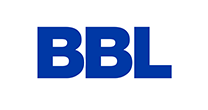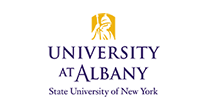News
July 23, 2020UAlbany Highlighted as National Leader in Advancing Racial Equity
A new report from The Education Trust is highlighting the University at Albany as a leader in advancing racial equity among the nation’s most selective public higher education institutions.
The report, titled Segregation Forever’? The Continued Underrepresentation of Black and Latino Undergraduates at the Nation’s 101 Most Selective Public Colleges and Universities, relied on 20-years of federal education and U.S. Census data to analyze and compare the percentage of Black students enrolled at 101 of the most prestigious and best-funded public colleges.
Many of the institutions enroll a smaller percentage of Black students today than they did 20 years ago, according to the report. UAlbany stood out as one of the few exceptions, topping the list for enrolling Black students in representative numbers.
The report’s most recent data found that 17 percent of UAlbany students are Black, compared to 16 percent of New York residents. It also found that the University has increased the percentage of Black students on campus by 8.5 percentage points, even though the percentage of Black college-eligible residents in the state increased by less than a full percentage point. The University’s access grade improved from an “F” in 2000 to an “A” in 2017.
“We’ve been systematically addressing the issues our student leaders have highlighted, in terms of the campus climate, in terms of diversity, equity, and inclusion,” said UAlbany President Rodríguez, in an interview with The Education Trust.
“With the protests that have emerged, students continue to increase pressure on the institution, as they should, to hold our feet to the fire. All of us presidents have put out strong, bold statements against racism, as we should. But once the protests subside, once the media diverts their attention to the next crisis, how will we measure the progress that we’ve made? What’s going to be the sustainable, long-lasting, impactful change? That is the challenge before us. That’s what we need to focus on.”
Opportunities for All
Included as one of five priorities in its current strategic plan, UAlbany remains committed to inclusive education, promoting a campus culture that is diverse, and ensuring a welcoming and supportive community to students from all cultural and economic backgrounds. Last month, the University’s Office of Diversity and Inclusion held a virtual campus-wide discussion on race, social justice and the campus climate.
In an interview with the Chronicle of Higher Education, UAlbany Vice President for Student Affairs Michael Christakis credited the University’s success in diversifying its student body to “aggressive recruiting, dedicating resources to mentoring first-generation and underrepresented students, and creating support programs to make students feel welcome.”
Along with increases in Black student enrollment, UAlbany’s total representation of minority students is now at 41.9 percent, an increase of eight percent in the last six years.
“Students who have good experiences at the University spread the word to their communities,” Christakis said. “Success breeds success.”
This latest recognition adds to UAlbany’s growing number of national accolades that focus on colleges and universities serving economically disadvantaged students. Last fall, U.S. News & World Report ranked UAlbany in the top 10 percent for advancing social mobility. Washington Monthly has consistently ranked UAlbany among its top 50 national universities, with a notably high score in the category of social mobility. The Education Trust also previously recognized UAlbany as a national role model for the advancement of Latino/a student success and the New York Times has listed the University among its top 20 selective public colleges for offering students who come from poverty the greatest opportunity to achieve wealth in adulthood.
The Education Trust is a nonprofit advocacy organization. Its goal is to close the gaps in opportunity and achievement for students at all levels of the education system — especially those from low-income families and students of color.
























